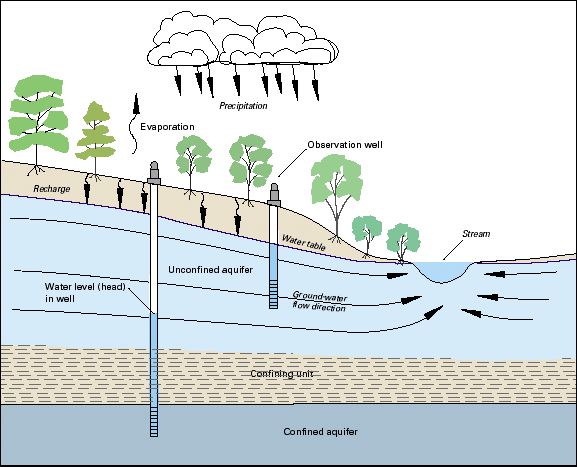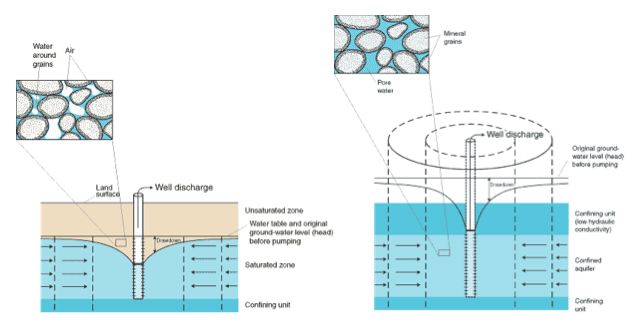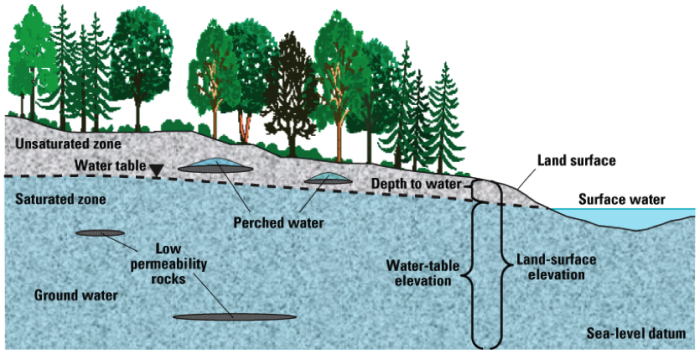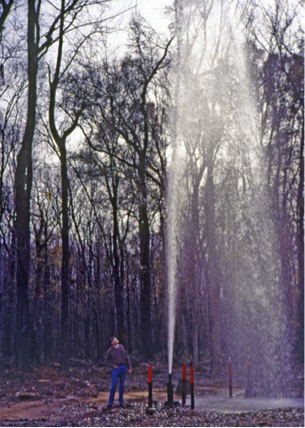Types of Aquifers
In more detail, there are three main classifications of aquifers, defined by their geometry and relationship to topography and the subsurface geology (Figures 6-9). The simple aquifer shown in Figure 6 is termed an unconfined aquifer because the aquifer formation extends essentially to the land surface. As a result, the aquifer is in pressure communication with the atmosphere. Unconfined aquifers are also known as water table aquifers because the water table marks the top of the groundwater system.
A second common type of aquifer is a confined aquifer, which is isolated from pressure communication with overlying or underlying geologic formations – and with the land surface and atmosphere – by one or more confining layers or confining units. Confined aquifers differ from unconfined aquifers in two fundamental and important ways. First, confined aquifers are typically under considerable pressure, which may be derived from recharge at a higher elevation or from the weight of the overlying rock and soil (known as the overburden). In some cases, the pressure is high enough that wells drilled into the aquifer are free-flowing. This condition requires that the water pressure in the aquifer is sufficient to drive water up the wellbore and above the land surface, and such wells are called artesian wells (Figure 7). Second, confined aquifers typically remain saturated over their entire thickness, even as water is removed by pumping wells. Water extracted from the aquifer comes only from the depressurization of the aquifer – a combination of depressurization and expansion of the water itself, and relaxation of the aquifer formation upon reduction in pressure (Figure 8).


The third main type of aquifer is a perched aquifer (Figure 6). Perched aquifers occur above discontinuous aquitards, which allow groundwater to “mound” above them. Thee aquifers are perched, in that they sit above the regional water table, and within the regional vadose zone (i.e. there is an unsaturated zone below the perched aquifer). The dimensions of perched aquifers are typically small (dictated by climate conditions and the size of aquitard layers), and the volume of water they contain is sensitive to climate conditions and therefore highly variable in time.


